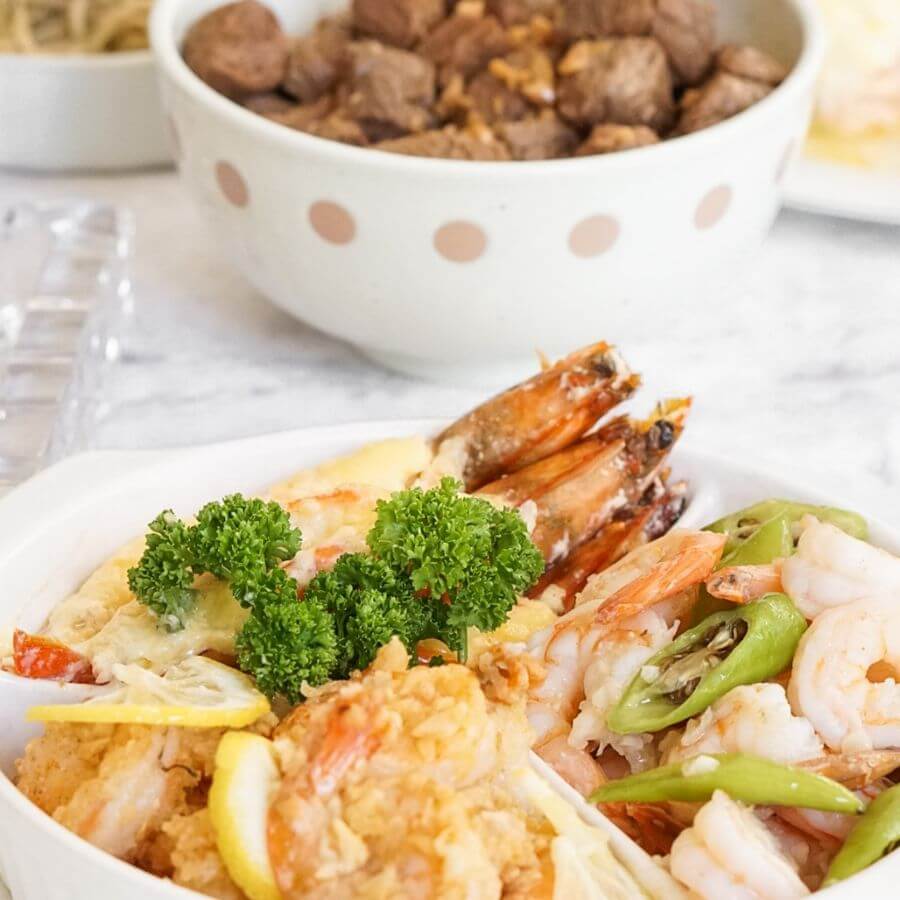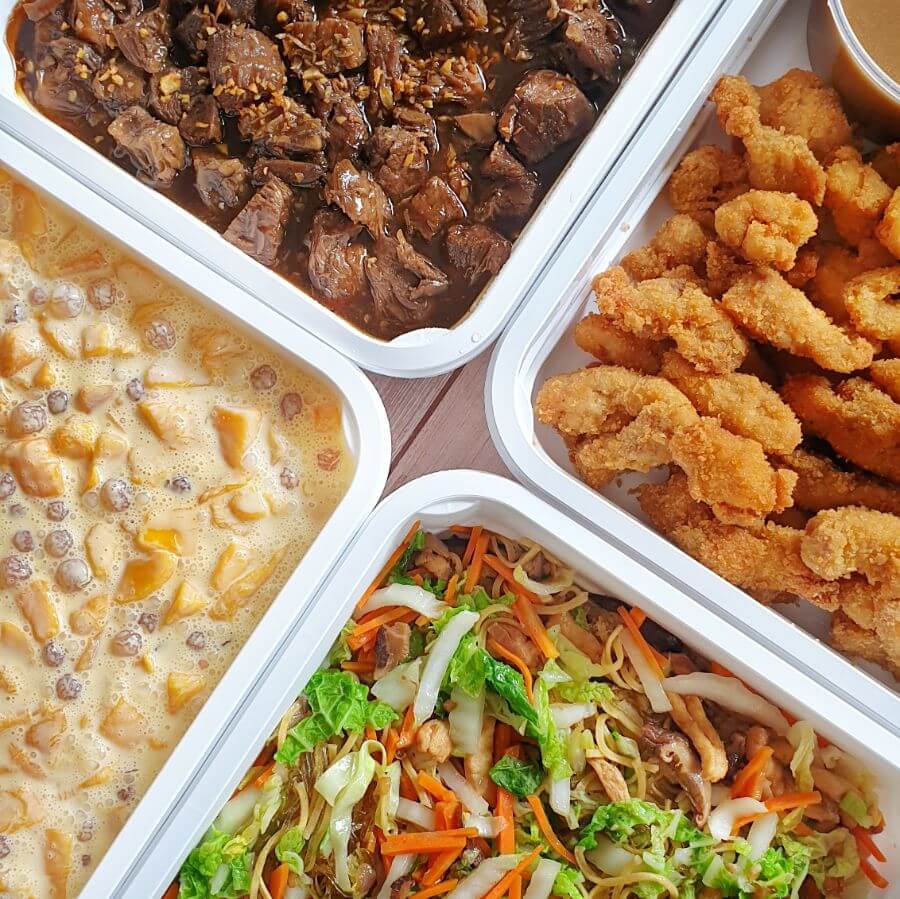How has Chinese food found its way into the hearts of Filipinos?
- 1. The sweet and sour flavor
- 2. Dimsum and dumplings
- 3. Noodles galore
- 4. The Filipino version of spring rolls
- 5. The ultimate veggie dish
- 6. The perfect partner
- 7. A sweet ending
Hold on to your chopsticks—we’re about to dive into how Chinese food has become a staple in the hearts (and stomachs) of locals all over the Philippines! We may know about some Chinese influences on Filipino food, but today we’re going to deep-dive into how and why Chinese cuisine has marked its place in the menus of nearly every Filipino household and restaurant. Let’s explore!
The Sweet and Sour Flavor

One of the iconic Chinese sauces, this sweet and sour flavor is guaranteed to make your taste buds sing! The star of the Chinese-themed show at FoodTray2Go is none other than the beloved Sweet and Sour Pork. With its perfectly tasty pork, tangy sauce, and pineapple chunks, it’s no surprise that this dish is a hit at every Filipino gathering.
Dimsum and Dumplings

The history of dumplings in the Philippines dates back to the early Chinese settlers who came to the country in the 16th century. They brought with them their cuisine and culinary traditions, including the art of dumpling-making. Over time, the Filipino-Chinese community grew, and so did the popularity of dumplings.
These little pockets of goodness are a staple in Filipino-Chinese households and are often enjoyed as a snack or a meal. And now, Filipinos can’t get enough of Siomai, a type of dumpling filled with pork, shrimp, and veggies, that can be found in fast-food chains and food stalls all over the country. Dip it in soy sauce with a hint of calamansi, and you’ll find yourself in dimsum heaven!
Noodles Galore

Noodles, noodles, and more noodles! The first Chinese noodles to gain popularity in the Philippines were thin and springy egg noodles better known as Pancit Canton. This dish quickly became a staple in Filipino households and was often served during special occasions and celebrations. It was also a popular street food, with vendors selling freshly cooked noodles in small carts and stalls.
Over time, other types of Chinese noodles also made their way to the Philippines. These included the delicate and translucent Pancit Sotanghon and the popular Pancit Bami which had a mixture of both Pancit Canton and Sotanghon noodles brought together in one mouthwatering dish of flavors and textures. These savory dishes are the perfect comfort food and can be found at every Filipino celebration—particularly birthdays, as they symbolize long life!
The Filipino Version of Spring Rolls

Spring rolls have a long and interesting history in the Philippines. The first spring rolls that gained popularity in the Philippines were the Chinese-style spring rolls, also known as Lumpia Shanghai, which quickly became a hit in Filipino households and was often served as an appetizer or snack.
Today, spring rolls continue to be a beloved dish in Filipino cuisine and can even be brought on affordable food trips with friends. With various regional variations and different fillings to suit different tastes, spring rolls have found a home in Filipino cuisine and have been adapted to suit the Filipino palate. They’re now the delicious result of a fusion of two traditional cultures. Yum!
The Ultimate Veggie Dish

Veggies never tasted so good until chopseuy came along! This Special Mix Vegetables has a fascinating history in the Philippines, and it all started with the arrival of Chinese immigrants to the country. These immigrants brought with them their own culinary traditions, and one of the dishes they introduced to the locals was the popular Chinese vegetable stir-fry known as “tsap seui” or “chao shui.”
The dish was quickly adapted to suit the Filipino palate, with the addition of local ingredients such as soy sauce, garlic, onions, and other vegetables like cabbage, carrots, and snow peas. The result was a unique fusion of Chinese and Filipino flavors that became known as “chopsuey.”
The Perfect Partner

It’s the ultimate sidekick to any Chinese dish: Fried Rice! Fried rice is not only delicious, but it’s also incredibly versatile and can be served as a side dish or a main course, depending on the occasion. In the Philippines, fried rice is a staple dish that can be found in almost every restaurant that serves Chinese cuisine.
A Sweet Ending

A perfect way to end a meal, and to top off this article—the sweet touch of Chinese desserts. One popular sweet treat that will make your taste buds sing is Buchi! The crispy outer layer of deep-fried glutinous rice rolled in sesame seeds contrasts perfectly with the sweet, gooey filling, creating a mouthwatering experience that will leave you wanting more.
Buchi has a long history in Chinese cuisine, dating back to the Tang Dynasty in the 7th century. It was traditionally made with sesame paste filling, but over time, other fillings like red bean paste and lotus seed paste became popular. Today, buchi can be found in various Asian cuisines, including our own!
Key Takeaway
Chinese food has become a staple in the Filipino diet, and we can’t get enough of it! With its unique flavors, affordability, and versatility, Chinese cuisine has captured the hearts of Filipinos of all ages. As evidenced by the dishes above, the Chinese influences on Filipino food don’t stop!
Cooking these dishes yourself might take some time, so why not order them along with our other made-to-order foods? You’ll be saving yourself the effort and the cost of ingredients, plus you’re guaranteed a good meal!
FoodTray2Go offers delicious Chinese dishes with our catering packed meals. Our meals come in convenient and disposable containers, making them easy to transport and serve. For bulk orders and questions, you can reach us on Instagram or Facebook at @FoodTray2Go or contact us through Viber at 0917-7026395. We’re open from 9 a.m. to 5 p.m., Monday through Sunday.



